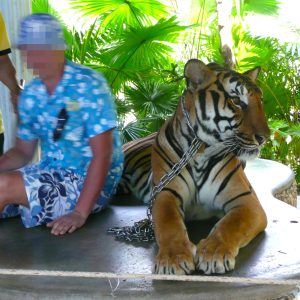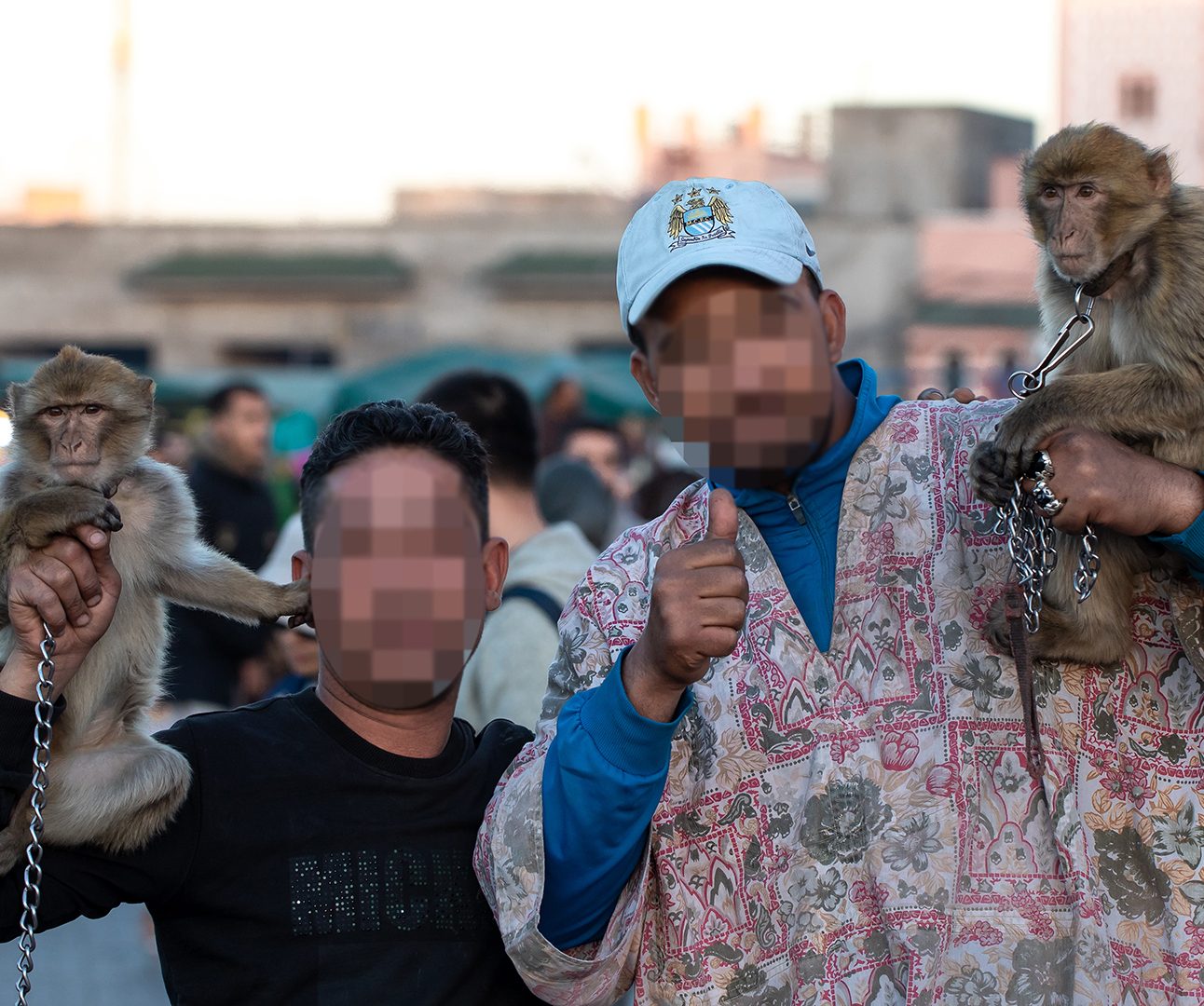What to Look Out For: Animal Interaction & Photo Props
There are lots of opportunities to get up close to wild animals in captivity including elephant riding, lion petting or walking with an animal, holding a snake or monkey, flying birds of prey, swimming with dolphins and sea lions, or posing with an animal for souvenir photos.
But these activities can have serious animal welfare implications and pose real risks to both animal and public health and safety.
Born Free strongly advises people not to participate in these activities.
 WHAT TO LOOK OUT FOR
WHAT TO LOOK OUT FOR
- Are the animals chained or tethered to the spot, so that people can sit or stand with them for photos or petting?
- It may be hard to see, but some animals may have had their claws or teeth removed or filed down, so that they are safer to handle.
- Have any animals, particularly reptiles, had their mouths taped or bound shut to avoid bite injuries?
- Are the animals being roughly-handled or beaten if they are not co-operating?
- Are the animals involved trying to hide, run or fly away?
- Animals used for rides can suffer terribly, particularly elephants or camels. Do they have poorly-fitting harnesses or saddles? Are they made to carry people on their backs in large, metal seats? Can you see any injuries or wounds?
- Are there any hand-washing facilities available to prevent the spread of disease?
Have you seen worrying cases of wild animal interactions?
Submit an eyewitness report via our Raise the Red Flag platform.
FURTHER INFORMATION

SELFISH SELFIES
Born Free is campaigning for an end to Selfish Selfies – will you pledge to end this cruel practice of animal exploitation?
